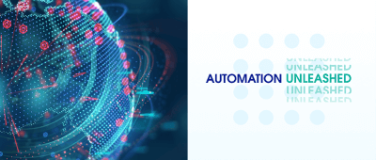Have you ever thought about the critical role the Department of Motor Vehicles (DMV) plays in our day-to-day life? It’s beyond measure. They provide critical services to citizens, businesses, and government agencies. The DMV is essential in everyone’s lives, enabling us to drive and own cars, facilitating the flow of goods on streets and highways, and ensuring the safety of society by decreasing fatalities, injuries, and damage in coordination with law enforcement and courts.
To put things into perspective, traffic crashes are one of the leading causes of injuries and fatalities in the nation. Here are some statistics on traffic crashes:
- One fatality every 14 minutes
- One person is injured every 13 seconds
- One property damage crash every seven seconds
- One law enforcement-reported crash every five seconds
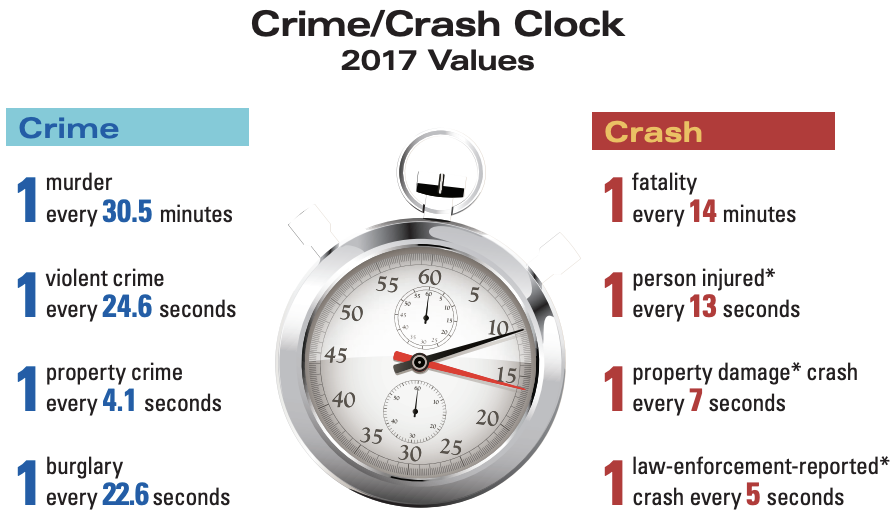
There are 227+ million licensed drivers and 276+ million registered vehicles in the United States. The criticality of services DMV provides and the number of users it serves is an area of great potential for digital innovation.
Challenges facing the Department of Motor Vehicles
Modern citizens demand digital experiences. So much that people pay so-called “line holders” to wait all night outside of the DMV office just so they don’t have to. As Philip D. Murphy, New Jersey Governor puts it, “Folks are frustrated by long lines, and so am I. We want to see those lines end as much as everyone.”
Whether you’re there to take a drivers license test, renew your car’s registration, or just sort out some paperwork, you will likely spend hours at the DMV. Even lawmakers are questioning the DMV about their infamous long lines. So what are the causes of these long lines in the DMV? Here are a few:
- Required in-person visits and inability to handle automated transactions
- Disconnected systems needing to respond rapidly
- Manual and paper-based verification processes
- Need for a dynamic process to gather and analyze massive amounts of data quickly
- Unable to communicate and digitally engage at scale across different social media platforms
- Limited channels with an inability to handle high call volumes and not enough interpreters
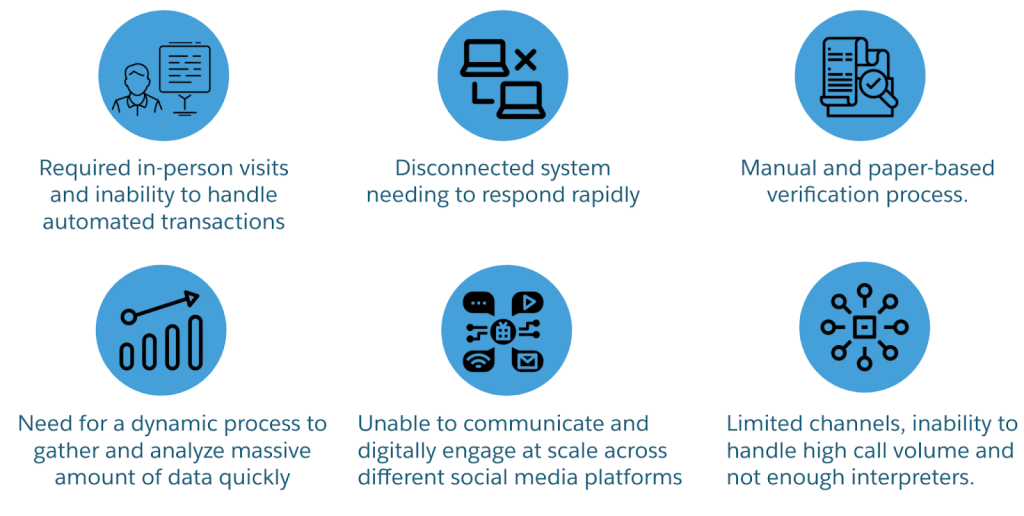
Without significant changes to the DMV process, people will continue to be frustrated with the customer service available, especially if they have to wait for hours in long lines. Imagine instead of going in person to the DMV with utility mails for verification, what if your license or car registration was delivered to you in a few clicks from the comfort of your home?
Composability for the Department of Motor Vehicles
One way to provide citizen safety, first-class experiences, and improve the agility of the DMV is to reimagine the department of motor vehicles using a composable approach. Let’s use the value exchange to model the business model for the DMV. As shown in the diagram below, people will be providing data, money, and reach in exchange for different service types such as issuing driving licenses, car registration, ordering license plates, and more.

To provide these services, various interactions take place between the DMV, people, and partners. Let’s say a person relocated from the state of California to the state of Virginia. They need to transfer their driving license, car registration, and license plate to the state of Virginia. During this process, a person needs to provide additional documents such as social security number, car title, car insurance coverage, proof of inspection, current address with utility bills for verification purposes.
If we represent the above interactions using a value network, we will get the below value network diagram, and each value exchange can take place via APIs. In this value network, people interact with the DMV to get these service types. For example, a 16-year-old visits the DMV to get a new license, car registration, and license plate. First, they have to pass the practical and knowledge test. Then, they have to provide proof of residency, social security number, and vehicle insurance information. Upon successful verification, the license, car registration, and plate will be mailed to their house or picked from the DMV office.
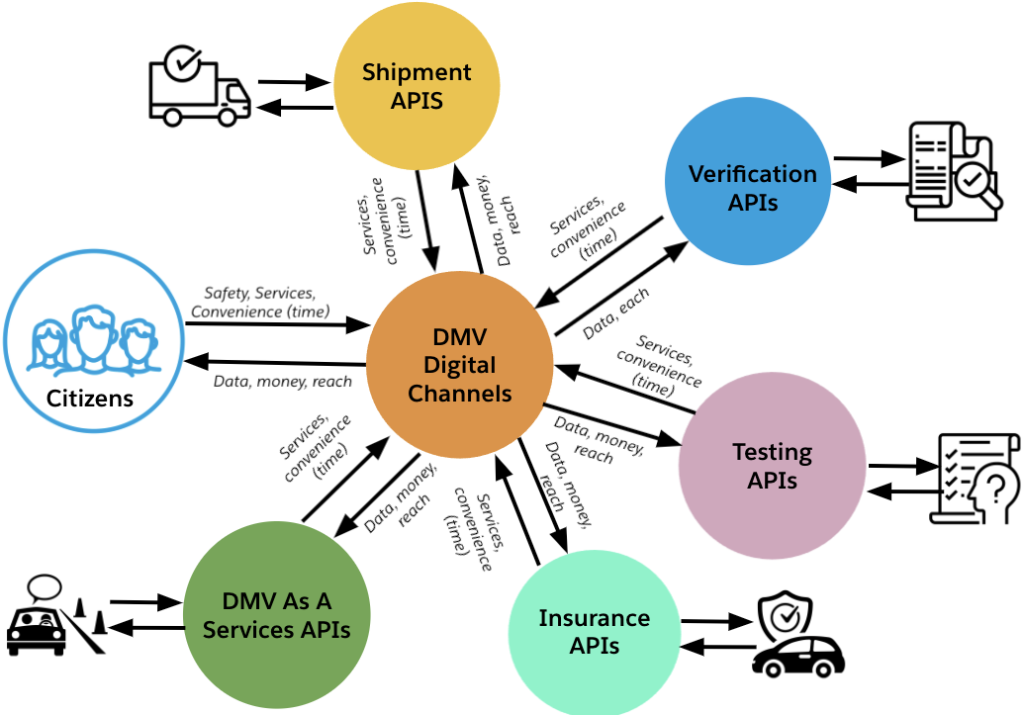
Composable enterprise architecture for the Department of Motor Vehicles
The diagram above shows the DMV’s API ecosystem. Partners who work closely with the DMV can create APIs to enable real-time communications channels to serve people better. The DMV can also create channels like mobile apps, web apps, and other IoT devices to interact with citizens. Imagine if you could ask Alexa about your upcoming car inspection, license renewal, or registration. Private sectors are able to achieve these kinds of experiences, and opportunities for innovation exist at the public sector level as well.
If the DMV opens up APIs to the developer community to build additional services on top of it, we’ll be able to see more innovation. Imagine if through the DMV API Ecosystem, someone develops a startup called “My DMV Care” that provides services like issuing, license renewal, vehicle registration, inspection, and more, either onsite or mobile. Imagine you could schedule a mobile inspection and vehicle registration service via an app within a few clicks and get the service wherever you are – either at home or your office – where your car is parked.
MuleSoft Anypoint Platform is the only unified platform for integration and API management. It is the foundation of a composable enterprise, helping organizations realize the benefits of API-led connectivity. Coupled with our outcomes-driven delivery approach, Catalyst, we enable hundreds of public sector organizations to leverage composability and API-enabled business capabilities to drive better citizen experiences and agility. A better way of translating the above API Ecosystem is through an architecture called API-led connectivity.
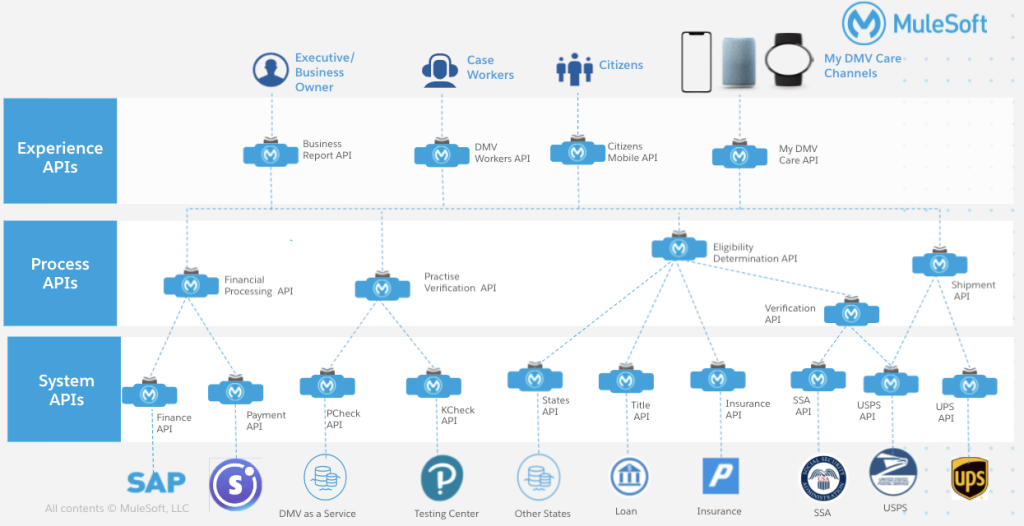
MuleSoft’s API-led connectivity approach consists of three layers, and APIs in each layer are developed to play a specific role. For example, System Layer APIs are used to unlock data from systems of record, legacy, and SaaS applications. The Process Layer APIs are used to compose data from System Layer APIs into processes and the Experience Layer is used to deliver a tailored user experience via different channels such as mobile, web, and IoT.
Let’s illustrate this through another example. If you moved from California to Virginia and wanted to transfer your driver’s license and car registration, you could use “My DMV Care” channels to determine your eligibility.
An Eligibility Determinations Process API would verify your current driver’s license and registration by calling data from your state’s DMV API; your car title by calling the loan provider; your car insurance by calling insurance provider companies; your social security by calling the Social Security API; and your current address by calling USPS APIs.
In addition to streamlined experience, citizens can track the status of their applications for transparency purposes. MuleSoft can pull data for dashboarding purposes for the DMV executive team to measure business outcomes and pinpoint areas for improvement. Call center agents will also have the same capabilities to support any cases and immediately prioritize which citizen to address first based on average wait time.
Conclusion
As the world’s number one integration and API platform for government agencies, MuleSoft has the proven product, approach, and expertise to support DMV digital transformation. Public sector organizations around the globe rely on MuleSoft to deliver better constituent experiences, drive secure modernization, and accelerate innovation.
Learn more about how MuleSoft can transform and modernize DMV services in our Department of Motor Vehicles (DMV) webinar.
Special thanks to Matt McLarty for his contributions to this blog.








